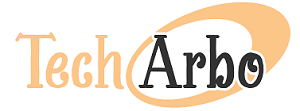What exactly is the Iot hub in Azure?

The Internet of Things (IoT), which links millions of devices and offers a potential source of income, is raising the bar for the IT industry. Before delving deeply into Azure’s IoT hub, Are you familiar with what the term “Iot” means? So, The internet of things, or IoT, is a network of connected computing devices, mechanical and digital machinery, items, animals, or people that may exchange data across a network without needing human-to-human or human-to-computer contact. Azure IoT hub is a service developed by Microsoft to help you realize your vision utilizing safe and scalable solutions.
Azure IoT hub is used everywhere, from offering a communication channel with increased security for data transmission and reception from IoT devices to gaining interoperability with Azure IoT Edge and Azure Stack for developing hybrid IoT applications. IoT Hub supports a variety of message patterns, including device-to-cloud telemetry, device-to-device file upload, and request-reply techniques for cloud device control.
What is Azure Iot Hub?
A managed IoT service housed in the cloud is the Azure IoT hub. It enables two-way communication between IoT applications and managed devices. Thanks to this cloud-to-device communication, you may get data from your devices. You can also communicate with them by sending instructions and policies.
Between millions of IoT devices and a solution back end, Azure IoT Hub, a fully managed service, provides dependable and secure bidirectional interactions. It provides a controllable platform service across edge and cloud to connect, monitor, and govern the billions of IoT assets. It consists of data and analytics for creating, deploying, and managing IoT applications in organizations, together with operating systems and security for gadgets and machinery. Additionally, there are three components that the Internet of Things services collaborate on:
- Initially, the actual physical items or things, such as machinery, gadgets, or sensors, maintain a consistent or sporadic connection to the cloud.
- Second, data is gathered by the objects for analysis and transformation into valuable knowledge by people or AI.
- The last factor is how individuals use the insights and apply them to their businesses and the processes and tools they employ.
Benefits of Azure Iot Hub
With the help of Azure IoT Hubs, IoT solutions are made possible with dependable and secure connections between millions of IoT devices and a backend housed in the cloud. Here we have listed the benefits of Azure Iot Hub:
- First and foremost, this is employed in developing IoT solutions that enable dependable and secure connections between millions of IoT devices and a backend hosted by the cloud.
- Second, it facilitates communication between the device and the cloud as well as between the cloud and the device. Additionally, this uses a variety of messaging patterns, including device-to-cloud telemetry, device-to-device file upload, and request-reply techniques for cloud device control.
- The device connections and failures. The capacity to create scalable, feature-rich IoT applications, such as Managing industrial machinery used in production, is first. Second, identifying necessary resources in healthcare and monitoring the use of the office building next. Thirdly, IoT Hub monitoring tracks activities like device creation to preserve the health of your solution.
- As a final benefit, it aids in extending your solution from the cloud to the edge with per-device authentication, integrated device management, and scalable provisioning.
How valuable is Microsoft Azure IoT Hub?
Security upkeep and digital twins. Regardless of the number of your devices or use cases, you won’t need to look for more IoT services if you start with Microsoft Azure IoT. This platform includes IoT Edge for edge computing, Time Series Insights for rich visualizations, IoT Hub for administration and deployment, and more.
- First, the Azure IoT hub offers an improved communication channel for security so that IoT devices may transmit and receive data.
- To keep IoT devices safe and up to date, the device Update for IoT Hub provides over-the-air distribution of updates.
- Thirdly, it entails complete integration with Azure Event Grid and serverless computing to streamline the creation of IoT applications.
- For creating hybrid IoT applications, it is compatible with Azure IoT Edge and Azure Stack.
MQTT use in IoT hub
The machine-to-machine protocol known as “message queuing telemetry support” (MQTT) is described as having a low bandwidth demand, a small network footprint, and assisting IoT devices in communicating with one another. Even when connections between devices are unstable, MQTT in the IoT uses QoS levels to assure message delivery to recipients. MQTT IoT hubs like Airtel IoT aid in the tracking of freight vehicles and offer immediate notifications for the movement and safety of freight.
Conclusion
Connecting, tracking, and managing millions of IoT assets running on a variety of operating systems is made possible by Azure IoT hub services. Microsoft’s Internet of Things cloud connection is called Azure IoT Hub. Millions of IoT devices may communicate reliably and securely with a solution back end with this fully managed cloud service. You may learn about the condition of your devices and assets using device-to-cloud telemetry data. Cloud-to-device messaging allows you to deliver instructions and alerts to your connected devices. Device communications are transmitted durably to support devices attached and disconnected at different times.







